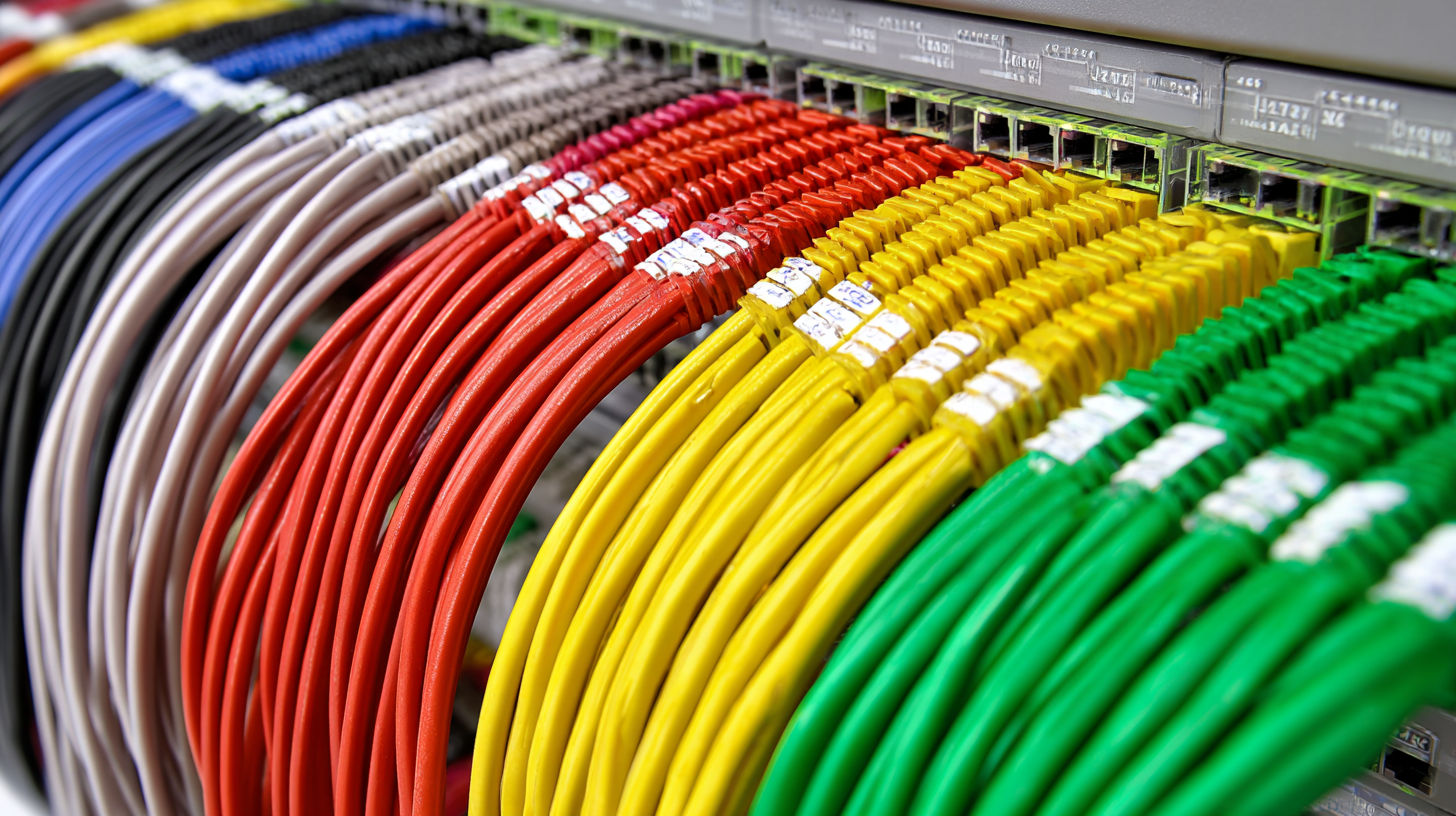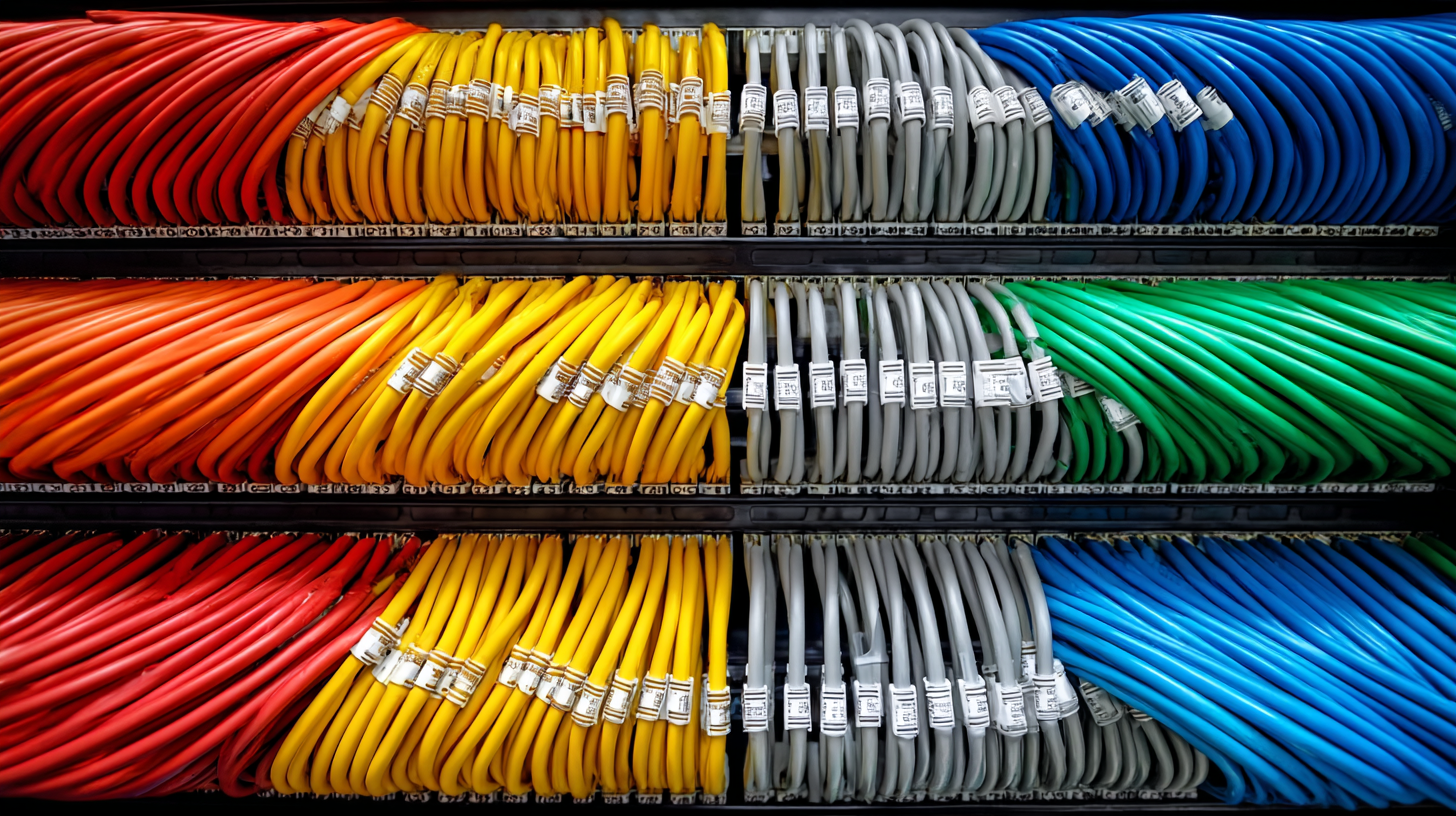
-
Home
-
Products
-
PVC Cable Material
-
Low Smoke Zero Halogen Cable Material
-
Cable material
-
Optical fiber cable
-
-
About Us
-
VR
-
News
-
Blog
-
Contact Us
Leave Your Message

In today’s fast-paced digital landscape, selecting the right network cable material is crucial for optimizing network performance and reliability. As reported by the International Telecommunication Union (ITU), an estimated 5.3 billion people are now connected to the internet, leading to an unprecedented demand for high-quality network infrastructure. This demand is closely tied to the materials used in cabling, with copper and fiber optic being the two primary contenders. According to a recent report by the Telecommunications Industry Association (TIA), fiber optic cables can transmit data at speeds up to 100 Gbps over long distances, compared to traditional copper cables which are limited to shorter runs and lower speeds. As businesses and individuals seek cost-effective and high-performance solutions, understanding the characteristics of different network cable materials is essential for making informed decisions that meet both current and future connectivity needs.

When selecting the best network cable material for your needs, it's essential to understand the properties of different materials available in the market. The primary options include copper, aluminum, fiber optics, and polymers. Copper remains a popular choice for its excellent conductivity and reliability, especially in telecommunications and building wiring applications. According to a recent report, the demand for copper cables is expected to continue rising, driven by the growing need for high-speed internet and data transmission.
On the other hand, fiber optic cables are gaining traction due to their unmatched speed and bandwidth capabilities. These fibers are immune to electromagnetic interference, making them ideal for environments where signal clarity is crucial. The same market report highlights that the fiber optic segment is likely to witness substantial growth, as more industries move towards digitalization. Additionally, polymers like PVC and XLPE are commonly used for insulation, providing durability and protection in various applications such as automotive and consumer electronics.
The ongoing trends in the wire and cable materials market indicate a steady shift towards innovative materials that enhance performance and sustainability. As technologies evolve, understanding the unique properties and applications of each material will be vital for making informed decisions in network cable selection.
When it comes to choosing the right network cable, the debate between copper and fiber optic cables is crucial for any business or home network. Copper cables, such as Ethernet, have been the traditional choice due to their cost-effectiveness and ease of installation. According to a report from the International Telecommunications Union, copper cables can transmit data up to 1 Gbps over distances of about 100 meters, making them suitable for most residential applications. However, they are susceptible to electromagnetic interference and signal degradation over longer distances, which can limit their performance in high-demand environments.

On the other hand, fiber optic cables offer significant advantages in terms of speed and bandwidth. They can transmit data at rates exceeding 100 Gbps over several kilometers without losing signal quality. A study by the Fiber Optic Association highlights that fiber cables are immune to electromagnetic interference, making them ideal for industrial or densely populated areas. Although the initial investment for fiber optic installation is higher, the long-term benefits, including lower maintenance costs and the capacity to handle increasing data traffic as network demands evolve, often make them the superior choice for future-proofing your network infrastructure.
When selecting network cable materials, environmental considerations play a crucial role. From production processes to disposal, the environmental impact of materials must not be overlooked. For instance, cables made from copper are often favored for their efficiency and performance; however, mining operations can lead to significant ecological damage. On the other hand, using recycled materials can alleviate some of these concerns, promoting sustainability while still ensuring effective connectivity.
Tips for choosing eco-friendly network cable materials include looking for certifications such as RoHS (Restriction of Hazardous Substances) and REACH (Registration, Evaluation, Authorisation, and Restriction of Chemicals). These certifications indicate that the cables are made without harmful substances. Additionally, consider the longevity of materials; investing in durable cables can reduce waste in the long run, contributing to a more sustainable network infrastructure.
Another environmental aspect to consider is the energy consumption associated with the production and transportation of network cables. By opting for locally produced materials or those that require less energy-intensive manufacturing processes, you can significantly reduce the carbon footprint of your network setup. Prioritizing ecological considerations not only benefits the planet but can also enhance the reputation of your business as a responsible player in the tech industry.
When selecting network cables, it's crucial to evaluate the cost versus performance to make an informed decision. According to the Institute of Electrical and Electronics Engineers (IEEE), the type of cable material can significantly impact both the speed and reliability of data transmission. For instance, copper cables, while generally less expensive, can introduce attenuation issues over long distances, leading to signal degradation. In contrast, fiber optic cables, though pricier upfront, offer higher bandwidth capabilities and longer transmission distances without loss, making them a suitable choice for high-demand environments.
A recent market study by Dell'Oro Group indicates that the demand for fiber optic cables has surged by 12% annually, driven by the growing need for faster internet speeds and increased user connectivity. Although the initial investment in fiber optics may deter some budget-conscious buyers, the long-term cost savings in maintenance and energy efficiency—reportedly up to 30% less than copper-based systems—underscore the importance of weighing performance against cost. Ultimately, understanding the specific requirements of your network will guide you toward the most appropriate material choice for your situation, leading to optimal performance and reliability.

The landscape of network cable materials is evolving rapidly, driven by advancements in technology and increasing demand for faster, more reliable connections. One of the most significant trends is the shift towards fiber optic cables, which offer superior speed and bandwidth compared to traditional copper cables. As more devices become interconnected, the need for high-performance data transmission is compelling manufacturers to innovate and explore new materials that enhance efficiency and reduce interference.
Another emerging trend is the development of environmentally sustainable cable materials. As awareness of environmental issues grows, manufacturers are investing in biodegradable and recyclable options. These eco-friendly cables do not compromise performance and are increasingly favored by businesses looking to minimize their carbon footprint. Additionally, the integration of smart technology in network cables, enabling real-time monitoring and diagnostics, is set to revolutionize how we manage and maintain network infrastructure, making future installations not just faster but also smarter.
| Cable Type | Material | Max Speed (Gbps) | Max Distance (meters) | Future Trends |
|---|---|---|---|---|
| Cat 5e | Copper | 1 | 100 | Increasing use of higher frequency signals |
| Cat 6 | Copper | 10 | 55 | Adoption of shielded variants for better performance |
| Cat 6a | Copper | 10 | 100 | Growing demand for higher data center speeds |
| Cat 7 | Copper | 10 | 100 | Increased use of shielding for reduced crosstalk |
| Fiber Optic | Glass | Up to 100 | Various (100+ with repeaters) | Expanding for longer distances and higher capacities |
| Cat 8 | Copper | 25-40 | 30 | High-speed data center applications becoming mainstream |





